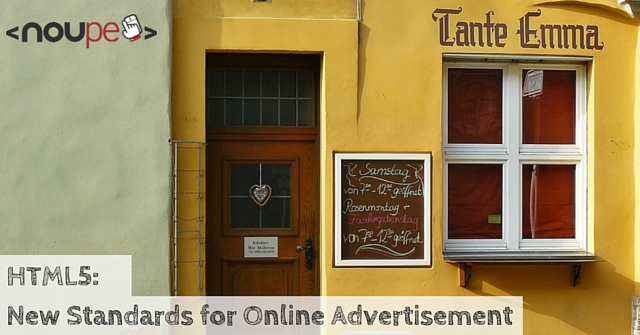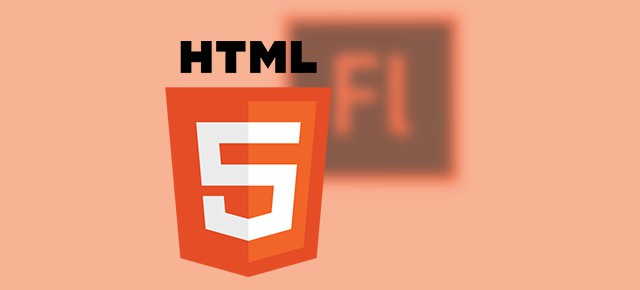At the beginning of the era of online advertisement, animated GIF was very popular. Afterwards, it was replaced by the Flash format for a long time. While Flash is rather irrelevant in today’s web development, online advertisement has taken a while to replace Flash as the standard for banner advertisement. This is not completely incomprehensible as Flash has quite a few advantages for advertisers. The format is space-saving, can be handed out in one single file and does not require a lot of browser compatibility testing as a Flash banner will apparently work on any browser that Flash works on. However, Flash doesn’t run on every browser anymore. Of course, this is a problem for the ad industry.

After Apple and Google have decided not to support Flash on mobile devices, it was obvious that online advertisers, particularly on the mobile market, had to react – especially since the share of mobile internet usage is steadily increasing.
Own Standard for HTML5 Ads
Since the advertisement market, in particular, is dependent on standards to be able to display ads on many different websites without complications, there are specific directives by now that decide how HTML5 ads have to look like technologically. The Interactive Advertising Bureau (IAB) has published guidelines that set specifications for HTML5-based banner advertisement as an international standard. Some national institutes have already elaborated upon these standards and defined them more precisely for their respective markets.
As, in contrast to Flash, HTML5 banners can not be delivered as a single file, the guidelines decide which files need to be included. „index.html“ as the base is necessary. Besides that, CSS and JavaScript data, as well as images and videos can be parts of an HTML5 ad.
An HTML5 banner is delivered as a ZIP file that contains all the data. There are some exceptions, however, for example when files are loaded externally, like a video that is integrated from an external source.
File Sizes: The Smaller, the Better
The same that applied to the GIF and Flash formats applies to HTML5 ads. Ad formats need to have small file sizes to reduce their loading time. That’s why graphics should be compressed as well as possible. There are plenty of compression tools for JPEG and PNG files that can save a couple additional kilobytes. Every kilobyte counts in online advertising.
You should leave out comments and other unnecessary information in the HTML, CSS or JavaScript source. You can also save some space by forgoing word wraps.
No Flash, Many Advantages
Looking at the features that CSS, web fonts and SVG come with shows that there are almost no disadvantages regarding design options when forgoing Flash. Animations, own fonts and complex graphical elements, as well as videos, can be used. By now, everything that has been developed around HTML5 replaces Flash almost entirely.

In addition to that, HTML5 ads offer even more advantages. While Flash banners have a set height and width, HTML5 banners can be constructed responsively. This way, they can adapt to the respective screen resolution. Google AdSense has been using the options for responsive advertisement on its ad service for a while now.
One reason big websites stay away from responsive design may be the non-existing support for those banner formats that still have a fixed size. Although a lot is created in HTML5, responsitivity in banner ads is not widely spread yet.
HTML5’s Few Disadvantages
Switching to the HTML5 standard does not only bring advantages. There are definitely disadvantages for advertisers. For example, the development costs when using HTML5 are higher because, in contrast to Flash, HTML5 ads need to be tested on different browsers and browser versions. Even though there is an HTML5 and CSS3 standard, you can not rely on the assumption that every browser displays HTML5 ads the same way. Especially older versions have to be considered.
Those that want to support any browser – capable of HTML5 or not – need to provide a fallback solution. In the easiest case, this could be a static image that is displayed instead of the HTML5 banner.
Conclusion
Most likely, the minority of internet users has noticed that ads are mostly shown in HTML5 format today. That certainly means that the difference to the Flash format is not that big visually. With HTML5, advertisers and developers have more options, but also – at least for now – more work to get done.
(dpe)





